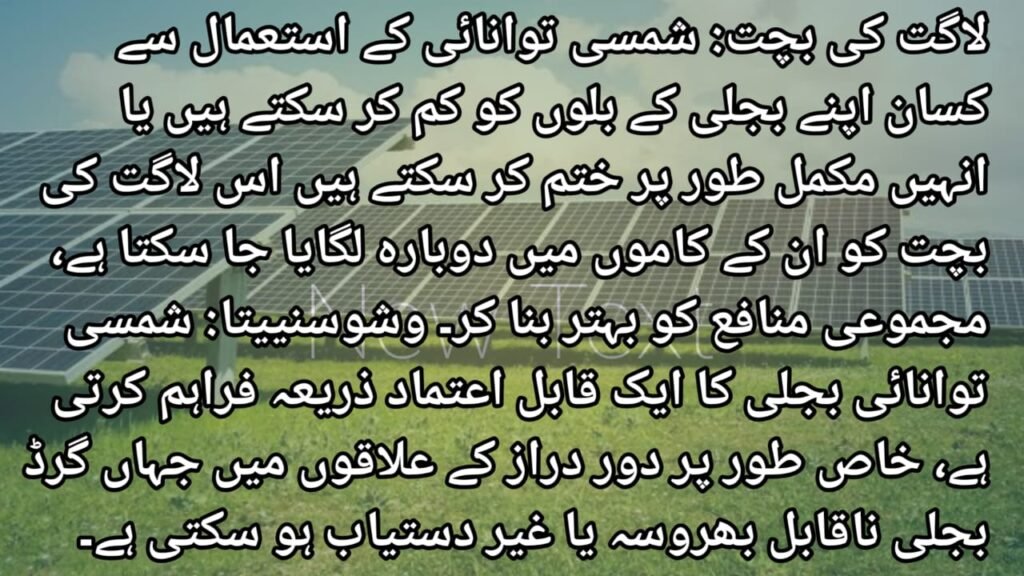Implementing a solar panel scheme for farmers can significantly enhance sustainability and reduce energy costs. Discover benefits and steps to integrate solar panels into agricultural operations.
Empowering Farmers through Solar Panel Schemes: A Sustainable Solution
In recent years, the agricultural sector has faced numerous challenges, from fluctuating market prices to unpredictable weather patterns. One of the most pressing concerns for farmers today is the rising cost of energy. Traditional energy sources such as fossil fuels are not only expensive but also contribute significantly to environmental degradation. In light of these challenges, governments and organizations worldwide are increasingly turning to renewable energy solutions like solar power to provide sustainable alternatives.
The Need for Solar Panel Schemes
Farmers, particularly in rural areas, often operate on tight profit margins. Energy costs can constitute a significant portion of their expenses, impacting their overall profitability. Moreover, rural regions may not always have reliable access to the electrical grid, making energy independence through solar power an attractive proposition. Solar panel schemes aim to address these issues by providing affordable, clean energy solutions tailored to the needs of agricultural communities.
Benefits to Farmers
The advantages of solar panel schemes for farmers are manifold:
- Cost Savings: By harnessing solar energy, farmers can reduce their electricity bills or even eliminate them entirely. This cost savings can be reinvested into their operations, improving overall profitability.
- Reliability: Solar energy provides a reliable source of power, especially in remote areas where grid electricity may be unreliable or unavailable. This reliability ensures that farmers can operate essential equipment without interruptions.
- Environmental Impact: Unlike fossil fuels, solar power is clean and renewable. By reducing dependence on fossil fuels, farmers can lower their carbon footprint and contribute to environmental conservation efforts.
- Long-term Investment: Solar panels have a long lifespan and require minimal maintenance. Once installed, they can provide energy for decades, offering a stable, long-term investment for farmers.
- Diversification of Income: Some solar panel schemes allow farmers to sell surplus energy back to the grid, providing an additional source of income. This diversification can buffer against agricultural market fluctuations.
Implementation of Solar Panel Schemes
Successful implementation of solar panel schemes requires careful planning and collaboration between various stakeholders:

- Government Support: Governments can incentivize the adoption of solar energy through subsidies, tax credits, or grants. These financial incentives help offset the initial cost of installation, making solar panels more accessible to farmers.
- Technical Assistance: Many farmers may lack expertise in solar technology. Providing technical assistance and training programs ensures that farmers can effectively install and maintain solar panels, maximizing their benefits.
- Community Engagement: Engaging local communities in the planning and implementation process fosters acceptance and participation. Collaborative efforts can address specific community needs and tailor solar solutions accordingly.
- Financial Models: Flexible financing options such as leasing or pay-as-you-go models can make solar panels more affordable for farmers with limited upfront capital. These models spread the cost over time, aligning with seasonal cash flows.
- Monitoring and Evaluation: Continuous monitoring of solar panel performance and impact allows for adjustments and improvements. Regular evaluation ensures that the scheme remains effective and meets the evolving needs of farmers.
Case Studies and Success Stories
Several regions have already implemented successful solar panel schemes for farmers:
- India: The Indian government’s Solar Energy Corporation launched the “Kisan Urja Suraksha evam Utthaan Mahabhiyan (KUSUM)” scheme, promoting solar water pumps and grid-connected solar power plants for farmers.
- United States: Programs like the USDA’s Rural Energy for America Program (REAP) provide grants and loans to agricultural producers and rural small businesses for renewable energy systems, including solar panels.
- Africa: In countries like Kenya and Tanzania, organizations like SolarNow partner with agricultural cooperatives to provide solar solutions, improving access to energy for farming communities.
Conclusion
Solar panel schemes offer a promising solution to the energy challenges faced by farmers worldwide. By providing affordable, reliable, and sustainable energy, these schemes not only enhance agricultural productivity but also promote environmental stewardship and economic resilience in rural communities. Governments, organizations, and communities must continue to collaborate to expand access to solar energy and empower farmers towards a more sustainable future. Through strategic investments and supportive policies, we can harness the power of the sun to cultivate prosperity and resilience in agriculture.

